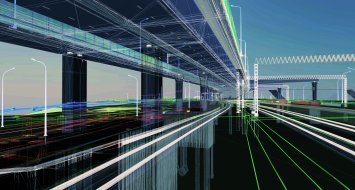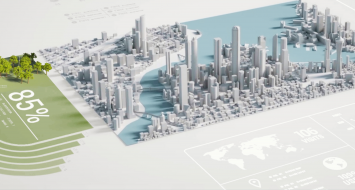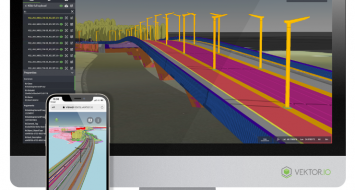BIM/GIS is a brick of the digital twin
The Egis group has long developed strong expertise in the field of GIS, initially in the context of environmental studies. For several years, the use of GIS has been extended to the design of urban projects and linear infrastructures; it is fully integrated into Egis' production processes and adds value to our engineering services.
Our clients now ask us to set up a GIS platform as a monitoring tool for the design/implementation/operation phases of their works. For them, it becomes a management system for their assets, the first brick of the digital twin.
For us, it is a differentiating asset that allows us to measure and regulate the performance of the buildings or infrastructures on which we work, both technically and in terms of cost and the environment. By centralizing data in a common digital base, we are able to influence the impact of different structures in terms of decarbonization and contribution to global carbon neutrality.
Standardization, the DNA of the EGIS Group
Standardization is an integral part of our DNA and we are strongly involved in these issues, participating in international working groups of ISO, CEN, BSi, but also within the MINnD and Railenium projects. It is within this framework that significant progress has been made to broaden the scope of application of IFCs (initially designed for the building industry) to the field of infrastructure (railways, roads, bridges, etc.), which has enabled BIM and GIS to be brought closer together, with the implementation of openBIM and openGIS standards.
Interoperability is a key issue for the Egis group, and we are currently implementing solutions to connect data from different systems and tools. Significant progress is also being made in the direct reading of IFC files in our GIS solutions.
Up to implementation on projects
These concepts were already pioneered in the work carried out for the Birmingham Tramway project, with the implementation of a GIS platform providing access to multimodal information, facilitating operation by all the players and overcoming the constraints linked to the urban characteristics of the project.
In the Philippines, it was on the repair of a 50-year-old structure with serious pathologies that Groupe Egis implemented a platform to federate BIM and GIS to ensure monitoring and corrective maintenance. Set up two years ago, this platform brings together a set of visualization, analysis and reporting tools that take advantage of numerous GIS bricks and data from real-time sources acquired with mobile tools or sensors.
The Egis proposal
Building a bridge between GIS and BIM already significantly improves methods. By centralizing data in a common digital base, it is possible to have a much more detailed knowledge of asset management. We are also able to influence the location, orientation and even the building materials of a structure with relevance.
Through our expertise, Groupe Egis can help you optimize design, accelerate project validation, reduce costs, and create smarter cities and resilient infrastructures.
Other news

Fully custom data processing pipelines
Build custom tools for processing reality data with Pointscene’s new API

Allplan Bridge 2022: The evolution of precast bridge modelin...
Discover a dedicated modeling solution to generate accurate geometry easily and quickly

BIM Infra, a quality approach according to setec
The benefits of BIM Infrastructure are numerous. For a long time, BIM Infrastructure has r...

Infrakit’s owners’ view: schedule, costs and quality
The work environment for which Infrakit was designed for is quite extensive and diverse. M...


